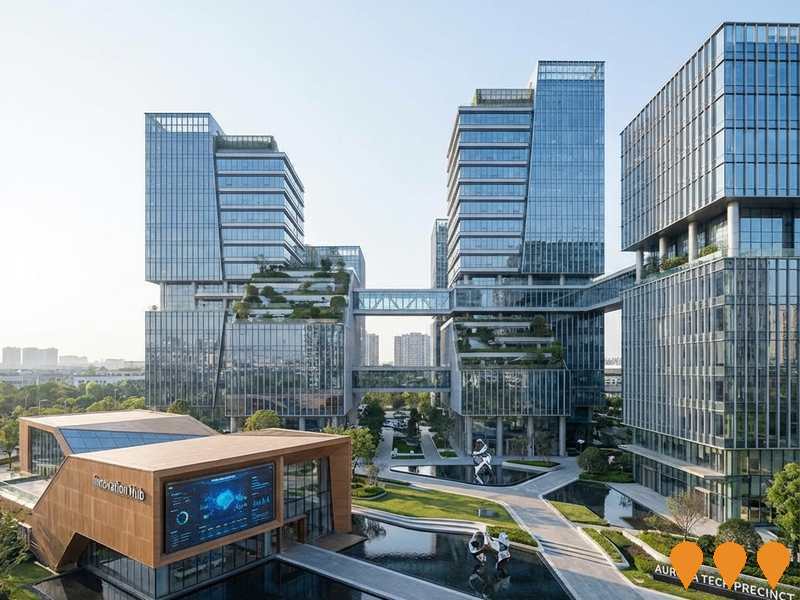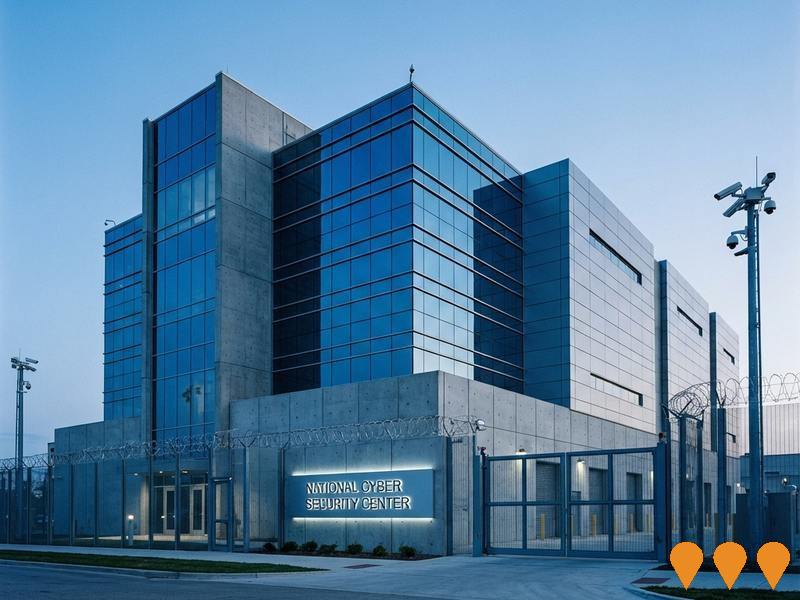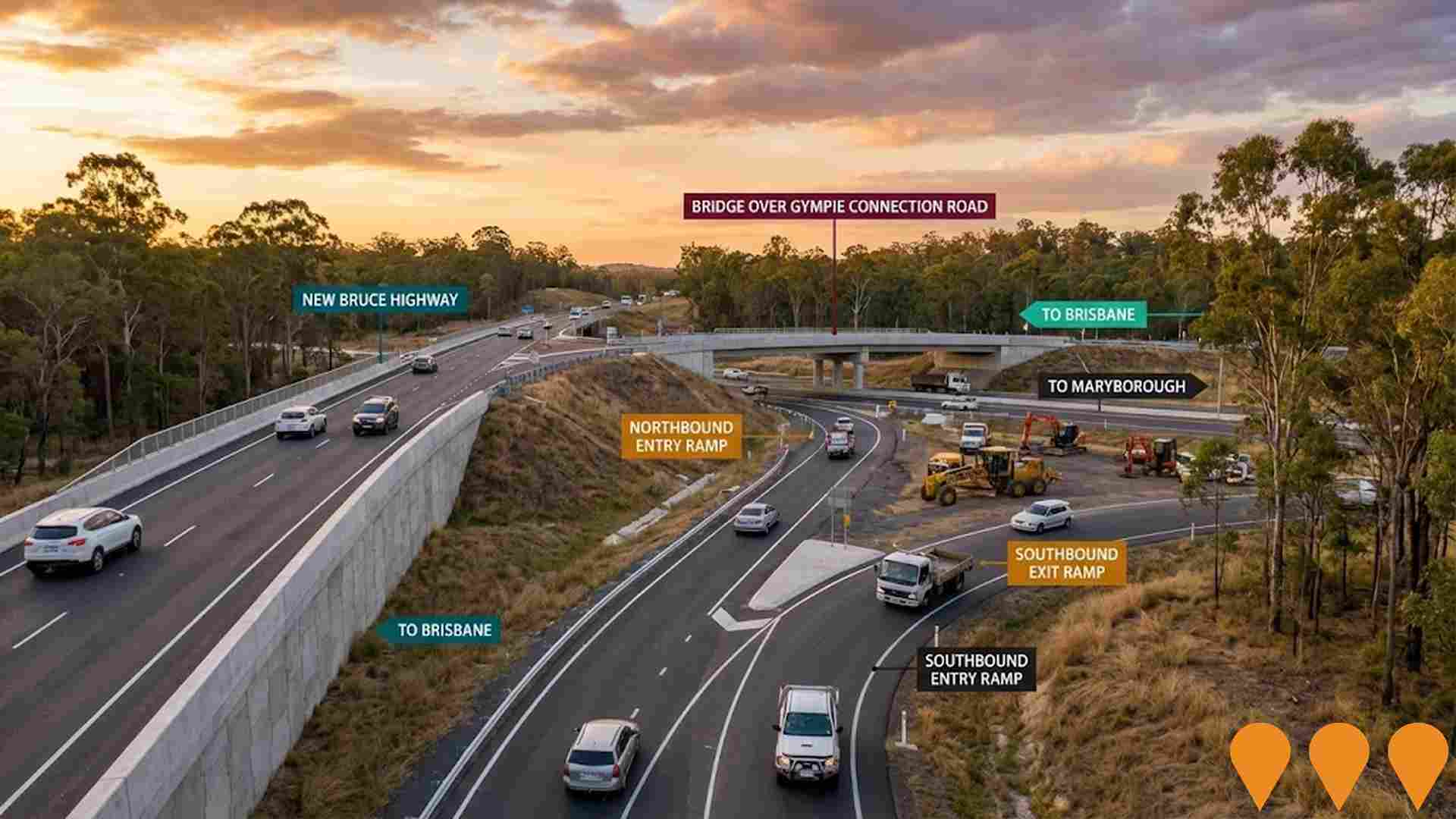Chart Color Schemes
est. as @ -- *
ABS ERP | -- people | --
2021 Census | -- people
Sales Activity
Curious about local property values? Filter the chart to assess the volume and appreciation (including resales) trends and regional comparisons, or scroll to the map below view this information at an individual property level.
Find a Recent Sale
Sales Detail
Population
Granville has shown very soft population growth performance across periods assessed by AreaSearch
Based on AreaSearch's analysis, Granville's population was around 3,187 as of August 2025. This reflected an increase of 136 people, which was a 4.5% rise since the 2021 Census that reported a population of 3,051 people. The change was inferred from the estimated resident population of 3,183 from the ABS as of June 2024 and an additional 7 validated new addresses since the Census date. This level of population equated to a density ratio of 65 persons per square kilometer. Population growth for the area was primarily driven by interstate migration, which contributed approximately 71.8% of overall population gains during recent periods.
AreaSearch adopted ABS/Geoscience Australia projections for each SA2 area, released in 2024 with a base year of 2022. For any SA2 areas not covered by this data and for years post-2032, Queensland State Government's SA2 area projections were adopted, released in 2023 and based on 2021 data. It should be noted that these state projections did not provide age category splits; hence where utilised, AreaSearch applied proportional growth weightings in line with the ABS Greater Capital Region projections for each age cohort, released in 2023 and based on 2022 data. Examining future population trends, a population increase just below the median of Australian non-metropolitan areas was expected, with the area expected to increase by 206 persons to 2041 based on the latest population numbers, recording a gain of 6.3% in total over the 17 years.
Frequently Asked Questions - Population
Development
AreaSearch assessment of residential development drivers sees a low level of activity in Granville, placing the area among the bottom 25% of areas assessed nationally
Granville has received approximately five dwelling approvals annually over the past five financial years, totalling 27 homes. As of FY-26, one approval has been recorded. On average, each dwelling has accommodated 2.8 new residents per year between FY-21 and FY-25, reflecting strong demand that supports property values. The average construction cost value for new homes is $340,000, which is below the regional average, suggesting more affordable housing options.
This financial year, $432,000 in commercial approvals have been registered, indicating the area's residential nature. Compared to the rest of Queensland, Granville has significantly less development activity, being 74.0% below the regional average per person. This limited new supply generally supports stronger demand and values for established dwellings, which is also below average nationally, reflecting the area's maturity and possible planning constraints. New building activity comprises 75.0% standalone homes and 25.0% medium and high-density housing, preserving Granville's low density nature with an emphasis on detached housing attracting space-seeking buyers. This marks a significant shift from existing housing patterns, which are currently 90.0% houses, suggesting diminishing developable land availability and responding to evolving lifestyle preferences and housing affordability needs. The estimated population count per dwelling approval is 1182 people, reflecting Granville's quiet, low activity development environment.
Population forecasts indicate Granville will gain 202 residents by 2041. Building activity appears to be keeping pace with growth projections, though buyers may experience increased competition as the population grows.
Frequently Asked Questions - Development
Infrastructure
Granville has limited levels of nearby infrastructure activity, ranking in the 0thth percentile nationally
The performance of an area is significantly influenced by changes in local infrastructure, major projects, and planning initiatives. AreaSearch has identified a total of 11 projects that are expected to impact the area. Notable projects include the Energy Storage Industries (ESI) Battery Manufacturing Facility, Mary Harbour Development, Homes for Queenslanders - Maryborough Social Housing, and Hyundai Rotem Steel Roll Forming Facility. The following list details those projects likely to be most relevant:.
Professional plan users can use the search below to filter and access additional projects.
INFRASTRUCTURE SEARCH
 Denotes AI-based impression for illustrative purposes only, not to be taken as definitive under any circumstances. Please follow links and conduct other investigations from the project's source for actual imagery. Developers and project owners wishing us to use original imagery please Contact Us and we will do so.
Denotes AI-based impression for illustrative purposes only, not to be taken as definitive under any circumstances. Please follow links and conduct other investigations from the project's source for actual imagery. Developers and project owners wishing us to use original imagery please Contact Us and we will do so.
Frequently Asked Questions - Infrastructure
Building Future Hospitals Program
Queensland's flagship hospital infrastructure program delivering over 2,600 new and refurbished public hospital beds by 2031-32. Includes major expansions at Ipswich Hospital (Stage 2), Logan Hospital, Princess Alexandra Hospital, Townsville University Hospital, Gold Coast University Hospital and multiple new satellite hospitals and community health centres.

Forest Wind Farm
Australia's largest wind farm project with up to 226 turbines and a capacity of 1,200 MW, located within commercial pine plantations in the Wide Bay region of Queensland. The project will generate enough clean energy to power approximately 650,000 Queensland homes and reduce CO2 emissions by over 3 million tonnes annually. It has received Commonwealth EPBC approval (2024) and Queensland Coordinated Project declaration, with construction expected to commence in 2026 subject to final investment decision.
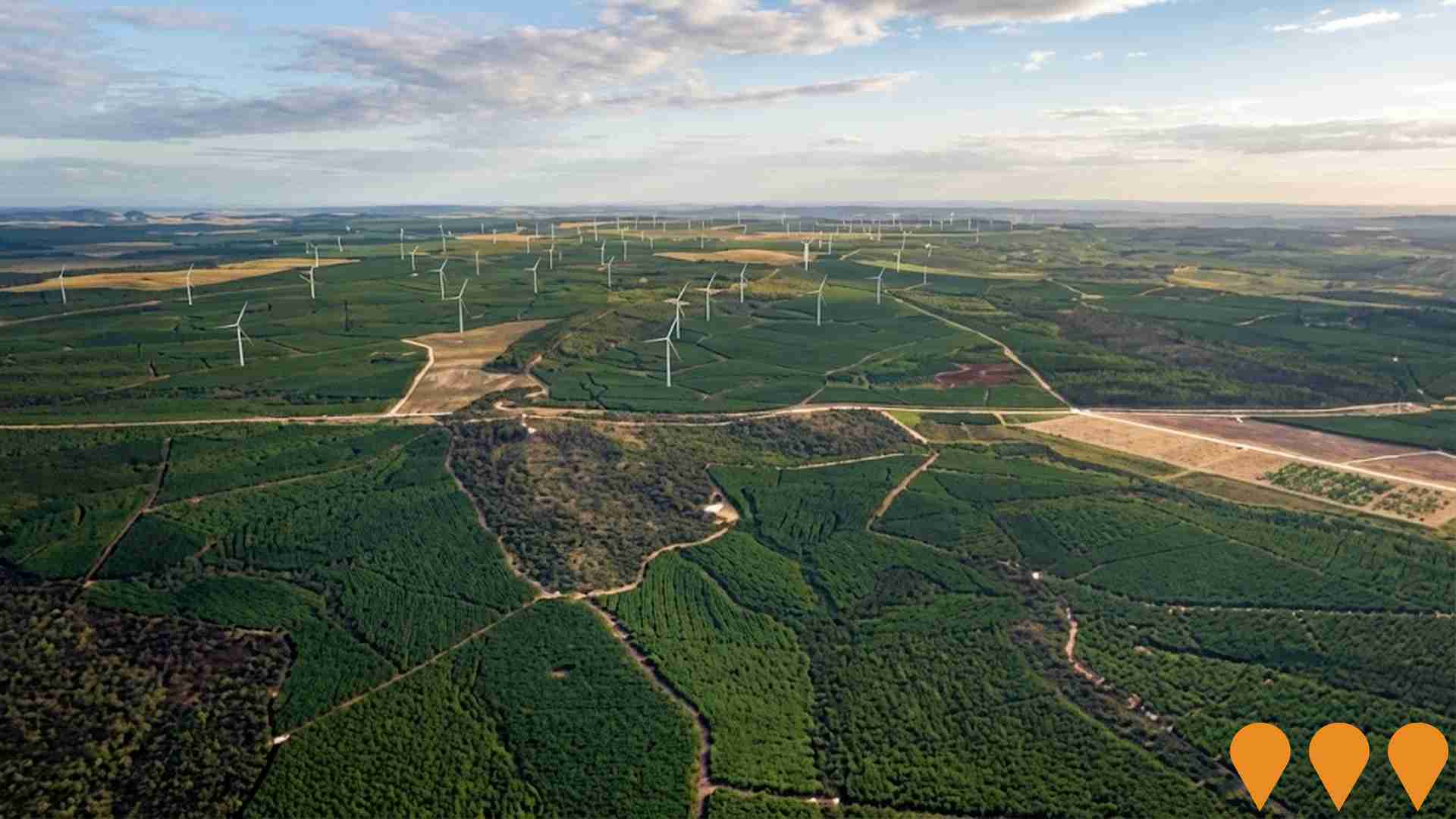
Queensland Train Manufacturing Program
The Queensland Train Manufacturing Program is delivering 65 new six-car passenger trains at a new purpose-built manufacturing facility in Torbanlea (Fraser Coast) with an additional maintenance and stabling facility at Ormeau (Gold Coast). Construction of the Torbanlea facility is well advanced in 2025 with major structural works and roofing complete, internal fit-out progressing and utilities connections underway. The first train is scheduled for completion and testing in late 2026, entering service in 2027. All 65 trains will be in service by 2032 to support Cross River Rail and the Brisbane 2032 Olympic and Paralympic Games. The program is currently supporting around 800 jobs in construction and manufacturing.

Mary Harbour Development
Large-scale 174-hectare master-planned mixed-use precinct proposed on the Mary River at Granville (Maryborough). Includes a 250-berth marina, 15-hectare harbour, resort hotel, conference centre, retail and community facilities, and residential development for approximately 3,500 residents (circa 1,800 dwellings). Originally proposed in the early 2000s by MSF Sugar, the project has remained shelved since 2015 due to lack of investment and market conditions. As of late 2025 there are no active development applications, construction contracts, or confirmed funding, and the project is considered dormant/indefinitely postponed.
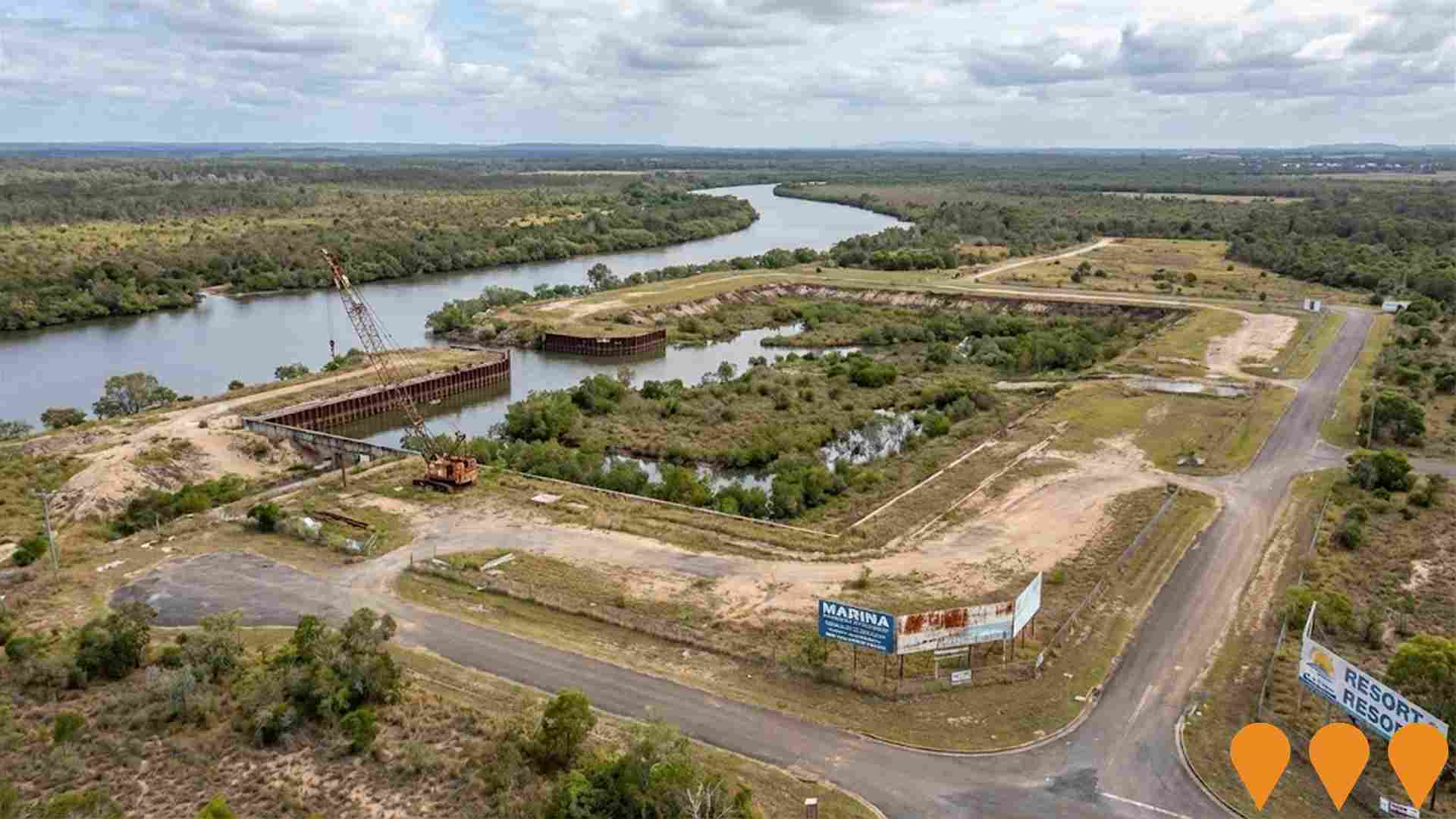
Energy Storage Industries (ESI) Battery Manufacturing Facility
Australia's first grid-scale iron flow battery manufacturing facility. $70 million facility producing 400MW of energy storage annually with 25-year battery life and 14-hour storage duration. Creating 273 full-time jobs when operational by mid-2029.
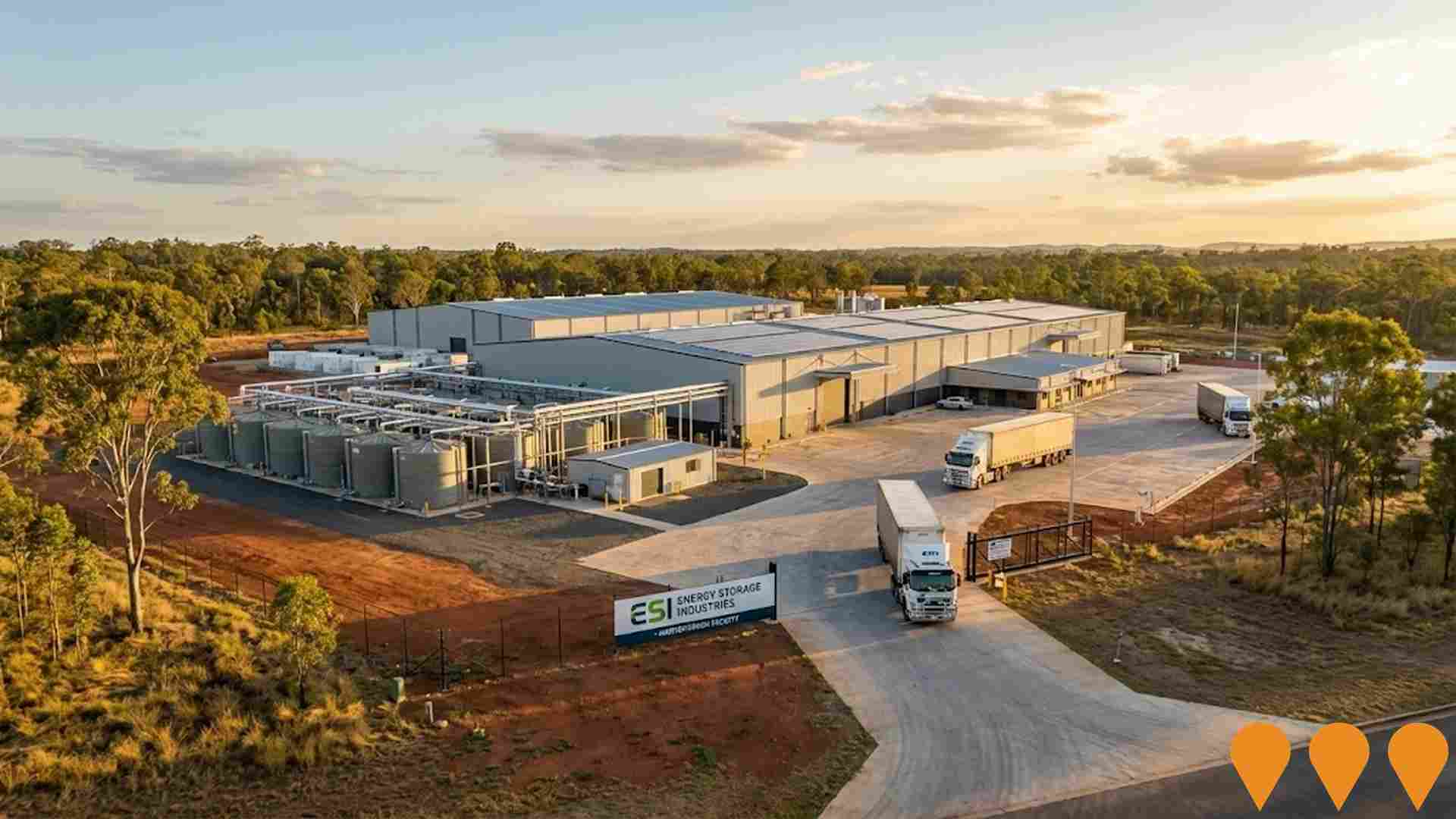
Hyundai Rotem Steel Roll Forming Facility
The Hyundai Rotem Steel Roll Forming Facility is a 30,000 square meter manufacturing plant in Maryborough West, producing sub-components for train car bodies using roll forming technology. It supports the Queensland Train Manufacturing Program by providing essential steel components for 65 new passenger trains, boosting local employment and supply chain in the Wide Bay region.
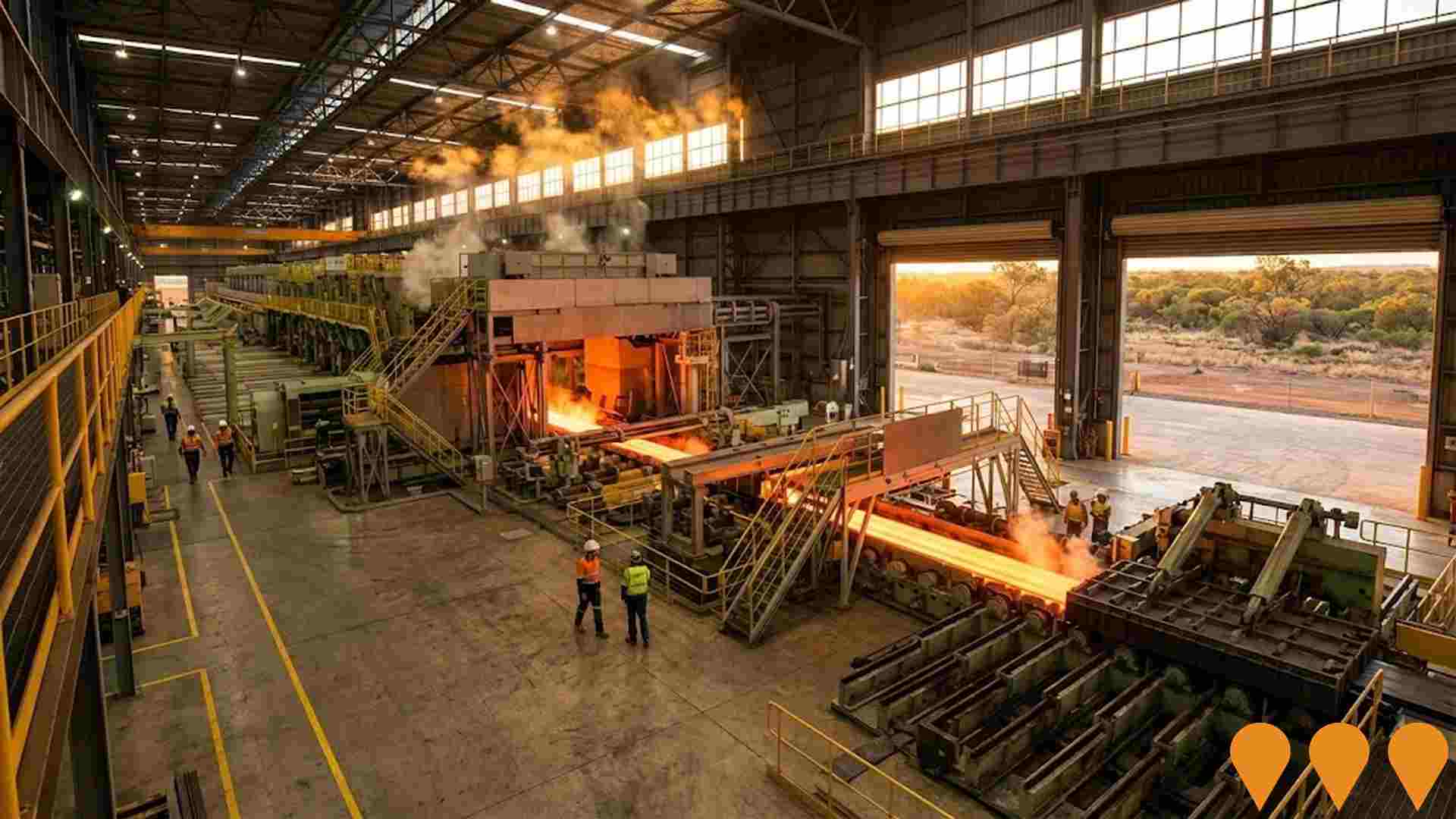
Rheinmetall NIOA Munitions (RNM) Manufacturing Plant
World's most modern munitions facility for 155mm artillery shell production. $90 million facility supporting regional manufacturing capability and creating up to 120 skilled jobs. The facility uses a 1250-tonne hot forging press and computerised machinery to produce 155mm artillery projectiles and metal parts for other munitions used by the Australian Defence Force as well as export markets. Currently produces 40,000 projectiles per year, with plans to expand to 100,000 per year.
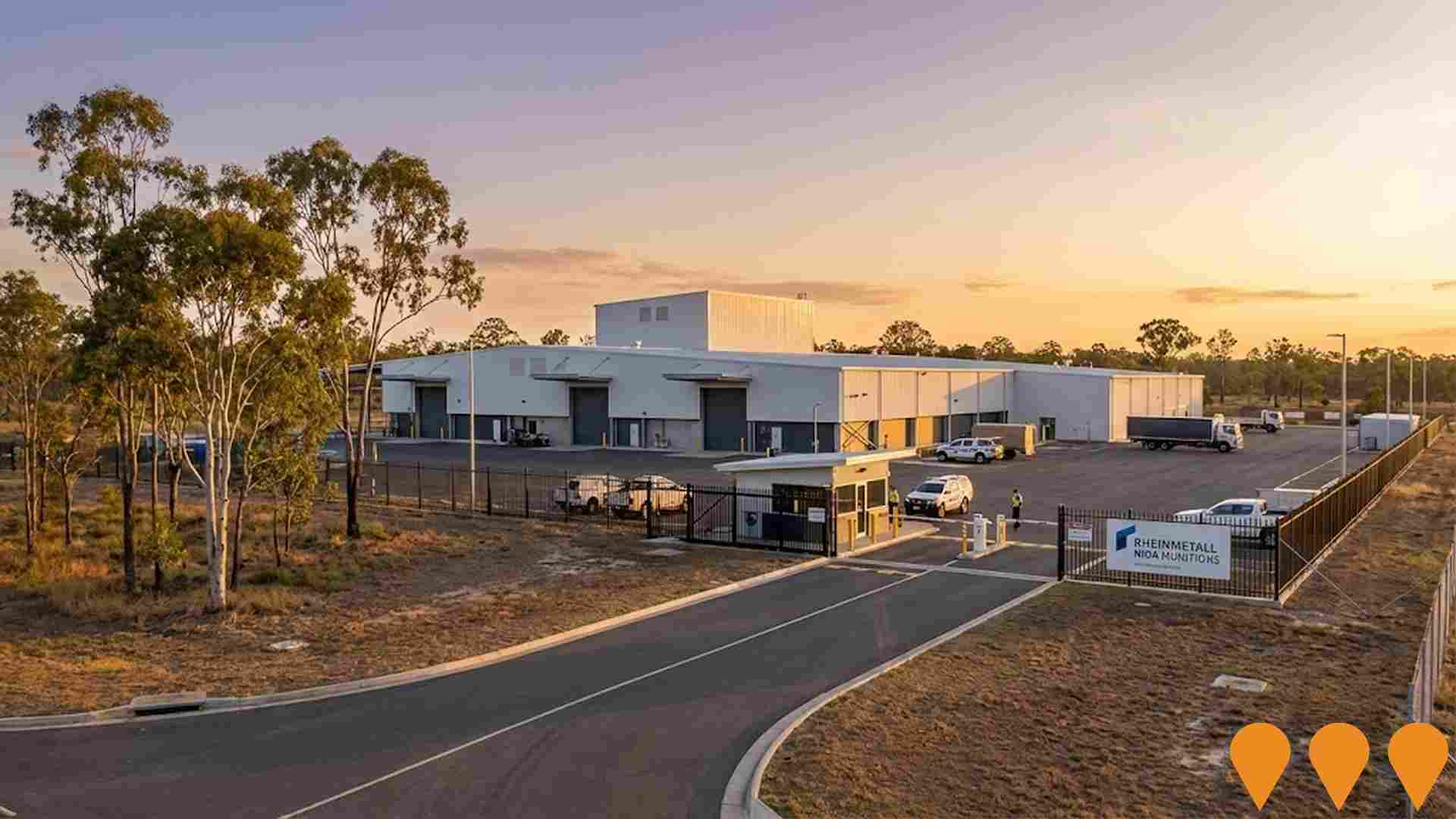
Hyne Timber Glue Laminated Manufacturing Plant
State-of-the-art 4000sqm glulam production facility incorporating latest automation technology. Supporting Queensland's sustainable timber industry with advanced engineered wood products.
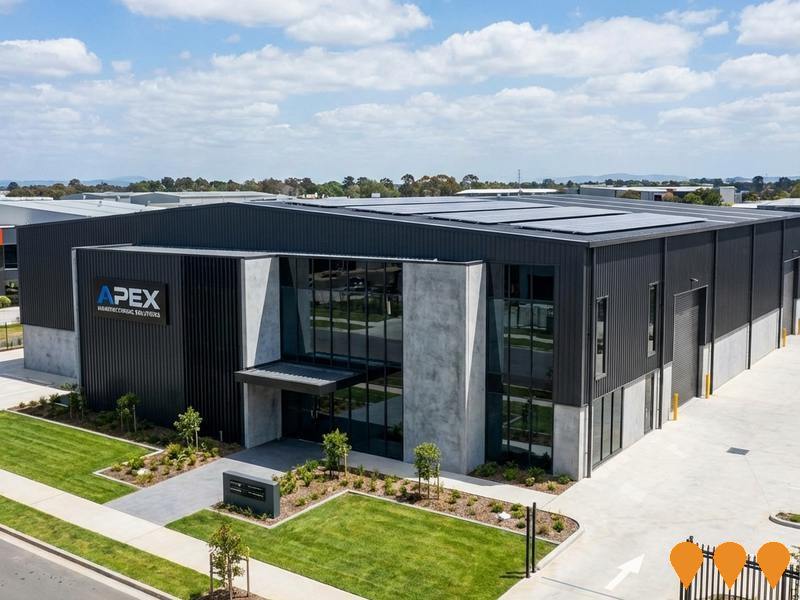
Employment
The labour market performance in Granville lags significantly behind most other regions nationally
Granville has a diverse workforce with both white and blue collar jobs. Key sectors include essential services, healthcare & social assistance, manufacturing, and retail trade.
The unemployment rate was 9.2% in June 2021, but it decreased to 5.2% by June 2025. Employment grew by 8.1% from June 2024 to June 2025. Manufacturing is particularly prominent with employment levels at 2.2 times the regional average. However, professional & technical services are under-represented at 2.1%.
Workforce participation in Granville lags behind the Rest of Queensland, at 43.5% compared to 59.1%. National employment forecasts from Jobs and Skills Australia, released in May 2025, project a local growth of approximately 5.9% over five years and 13.0% over ten years, based on industry-specific projections.
Frequently Asked Questions - Employment
Income
Income metrics place the area in the bottom 10% of locations nationally according to AreaSearch analysis
Granville's median income among taxpayers in financial year 2022 was $41,431. The average income during this period was $47,832. Both figures are below the national average. In comparison, Rest of Qld had a median income of $50,780 and an average of $64,844 in financial year 2022. Based on Wage Price Index growth of 13.99% since then, current estimates for Granville's median income would be approximately $47,227 as of September 2025, with the average being around $54,524 during this period. According to 2021 Census figures, incomes in Granville fall between the 4th and 5th percentiles nationally for households, families, and individuals. The earnings profile shows that 31.2% of residents (994 people) earn between $800 - 1,499, unlike metropolitan trends where 31.7% fall within the $1,500 - 2,999 range. Housing costs are modest in Granville, with 86.8% of income retained. However, total disposable income ranks at just the 7th percentile nationally.
Frequently Asked Questions - Income
Housing
Granville is characterized by a predominantly suburban housing profile, with a higher proportion of rental properties than the broader region
Granville's dwelling structure, as per the latest Census, consisted of 90.3% houses and 9.7% other dwellings (semi-detached, apartments, 'other' dwellings). In comparison, Non-Metro Qld had 91.8% houses and 8.2% other dwellings. Home ownership in Granville stood at 44.4%, with mortgaged dwellings at 28.5% and rented ones at 27.1%. The median monthly mortgage repayment was $1,083, lower than Non-Metro Qld's average of $1,179. The median weekly rent in Granville was $240, compared to Non-Metro Qld's $260. Nationally, Granville's mortgage repayments were significantly lower at $1,083 versus the Australian average of $1,863, and rents were substantially below the national figure of $375.
Frequently Asked Questions - Housing
Household Composition
Granville has a typical household mix, with a higher-than-average median household size
Family households account for 67.8% of all households, including 22.5% couples with children, 30.6% couples without children, and 12.7% single parent families. Non-family households constitute the remaining 32.2%, with lone person households at 29.0% and group households comprising 3.0%. The median household size is 2.4 people, larger than the Rest of Qld average of 2.3.
Frequently Asked Questions - Households
Local Schools & Education
Granville faces educational challenges, with performance metrics placing it in the bottom quartile of areas assessed nationally
The area's university qualification rate is 8.4%, significantly lower than the Australian average of 30.4%. This presents both a challenge and an opportunity for targeted educational initiatives. Bachelor degrees are most common at 6.7%, followed by postgraduate qualifications (0.9%) and graduate diplomas (0.8%). Vocational credentials are prominent, with 42.3% of residents aged 15+ holding such qualifications - advanced diplomas account for 8.6% and certificates for 33.7%.
Educational participation is high at 26.5%, including 10.7% in primary education, 9.2% in secondary education, and 1.7% pursuing tertiary education. Granville State School, established on 1st January 1984, serves the local community with an enrollment of 217 students as of 2021. The area has varied educational conditions, with 1 school focusing exclusively on primary education; secondary options are available in nearby areas. School places per 100 residents stand at 6.8, below the regional average of 12.3, indicating some students may attend schools outside Granville.
Frequently Asked Questions - Education
Schools Detail
Nearby Services & Amenities
Transport
Transport servicing is very low compared to other areas nationally based on assessment of service frequency, route connectivity and accessibility
Granville has 20 active public transport stops operating currently. These are served by buses only. There is 1 route in operation, offering a total of 40 weekly passenger trips.
Transport accessibility is limited, with residents typically located 899 meters away from the nearest stop. The service frequency averages 5 trips per day across all routes, equating to approximately 2 weekly trips per individual stop.
Frequently Asked Questions - Transport
Transport Stops Detail
Health
Health performance in Granville is a key challenge with a range of health conditions having marked impacts on both younger and older age cohorts
Granville faces significant health challenges, with various conditions impacting both younger and older residents. Approximately 46% (~1,466 people) have private health cover, lower than the national average of 55.3%.
The most prevalent medical issues are arthritis (affecting 12.6% of residents) and mental health problems (11.6%). A total of 51.3% report no medical ailments, compared to 54.0% in the Rest of Qld. Residents aged 65 and over comprise 25.4% (808 people), lower than the 29.9% in the Rest of Qld. Health outcomes among seniors are broadly similar to those of the general population.
Frequently Asked Questions - Health
Cultural Diversity
The latest Census data sees Granville placing among the least culturally diverse areas in the country when compared across a range of language and cultural background related metrics
Granville's cultural diversity was found to be below average, with 91.1% of its population being Australian citizens, 91.9% born in Australia, and 98.2% speaking English only at home. The predominant religion in Granville is Christianity, comprising 53.2% of the population, compared to 52.8% across the rest of Queensland. In terms of ancestry, the top three groups represented in Granville are English (33.3%), Australian (31.7%), and German (8.1%).
Notably, certain ethnic groups have different representations: Australian Aboriginal is overrepresented at 3.7% compared to the regional average of 3.4%, Scottish at 7.8% versus 8.2%, and French at 0.4% compared to 0.3%.
Frequently Asked Questions - Diversity
Age
Granville hosts an older demographic, ranking in the top quartile nationwide
Granville's median age is 48, which is higher than Rest of Qld's figure of 41 and significantly above the national norm of 38. The 65-74 age group comprises 13.6% of Granville's population, compared to Rest of Qld, while the 25-34 cohort makes up 9.4%. Post-2021 Census data indicates that the 15 to 24 age group has increased from 10.5% to 12.8%, whereas the 5 to 14 cohort has decreased from 12.5% to 10.3% and the 65 to 74 group has fallen from 14.9% to 13.6%. By 2041, Granville's age composition is expected to change notably. The 25 to 34 group is projected to grow by 37%, reaching 410 people from 298. Meanwhile, the 55 to 64 and 5 to 14 cohorts are anticipated to experience population declines.
